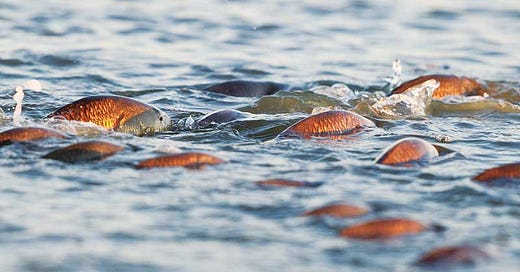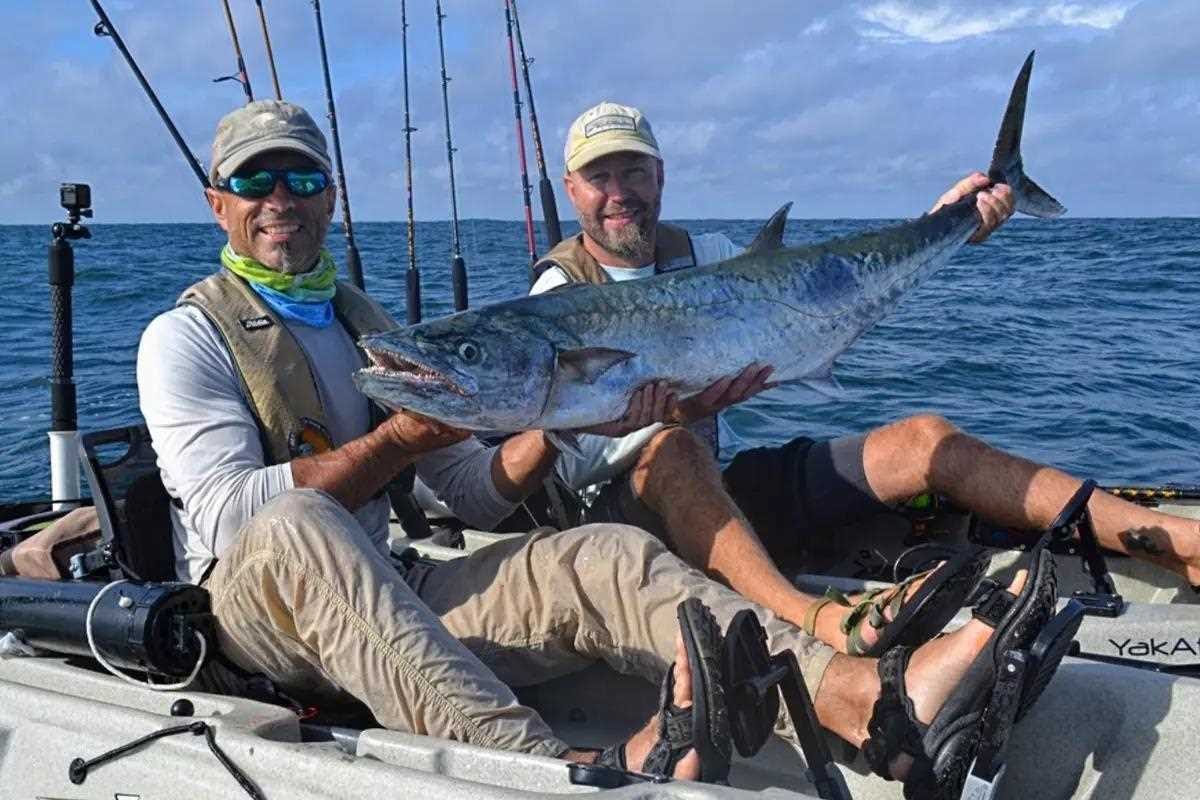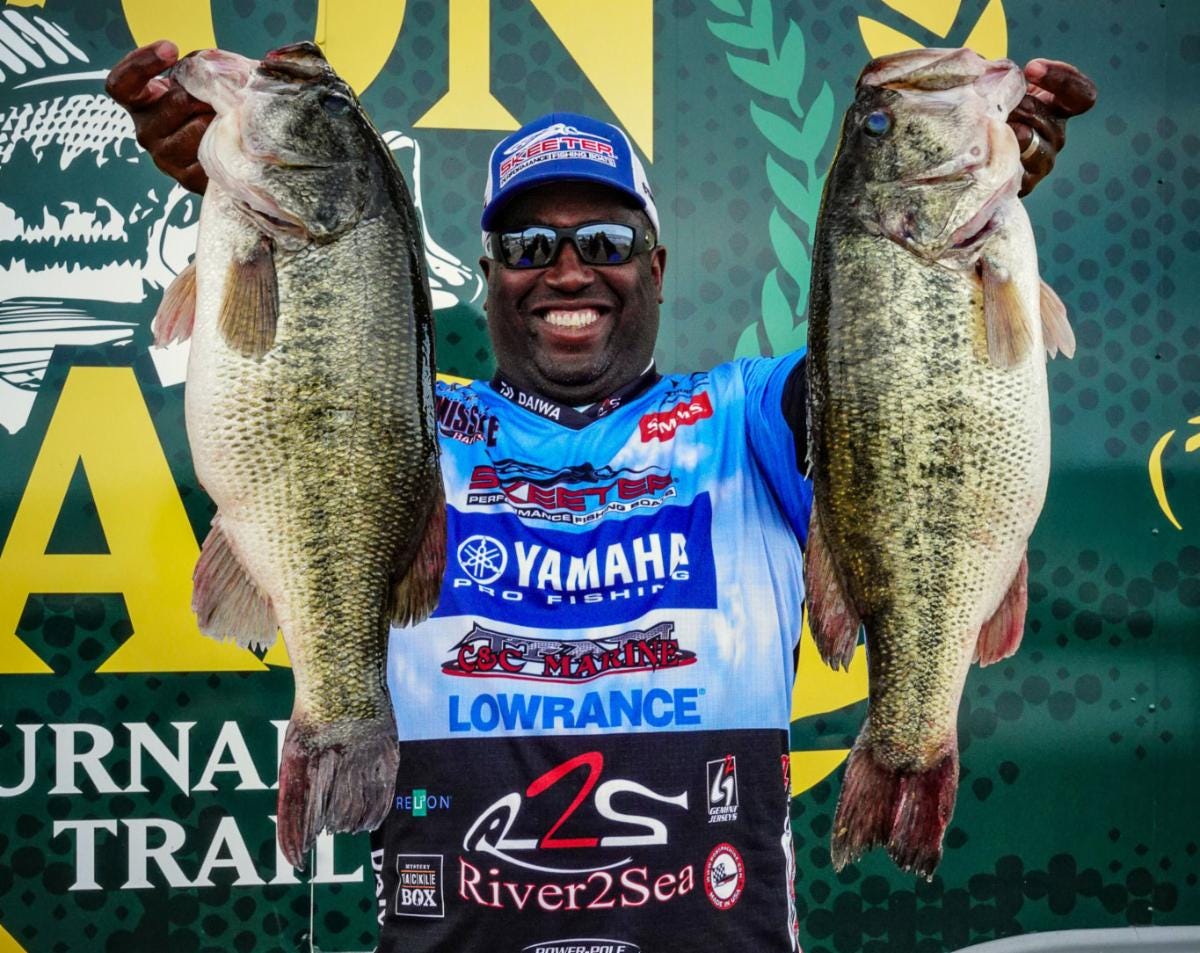The maritime rule of salvage has its origin in Roman law, which dictates that one who preserves or improves upon the misplaced property of another is owed compensation, even if the service was not requested. Let’s get out the internet trawler and get to work…
🎙️| SeaBros Fishing Pod: Castafari Live Show 2025 —> A discussion on presentation and small adjustments to generate bites when giant BFT are acting all weird and persnickety.
🎥 | John Skinner: Hail Mary Tarpon in SW Florida —> The legend strikes again… awesome narration of his thought process and decision-making throughout the trip.
Fishing Reports | OnTheWater - FishermanMag - HullTruth - SOL
***Renew your licenses here. HMS vessel permits here.***
A Deeper Dive: Glide Baits in the Salt
While there’s been a lot of digital ink spilled on this offseason topic du jour, what’s been largely absent is a succinct guide that gets beyond the chuck ’n wind and what bait to buy (!?) stages. Make no mistake, throwing large glide baits for striped bass (or their freshwater cousins) is a game requiring nuance, timing, and confidence. Whether casting from the surf or lobbing casts from a boat, the technique demands more than just heavy gear, a strong shoulder, and thick wallet. Glide baits—particularly the slow-sinking, single-jointed variety—mimic large, vulnerable baitfish and excel at drawing reaction strikes from quality fish. But to be successful, anglers must understand how to weight them properly, and work them differently based on their vantage point, water conditions, and time of year. Luckily for you, I’ve scoured no less than two dozen articles and forum postings over the last few weeks for the common denominators of glide success. Here’s what I found.
From the Surf: Precision and Patience
From the beach, especially on open sand/rubble structure or shallow estuaries, glide baits shine when worked very methodically. Long, clean casts are essential to cover water and maintain control. A slow, deliberate retrieve with occasional reel twitches imparts a seductive "S" motion that mimics injured bunker, herring or mullet. Surf anglers often face high wind, waves, and current—variables that can kill glide action if not accounted for. A high rod angle, a lead-wire-weighted front treble and tight line management can help maintain contact. When fishing cuts, inlets, outer sandbars, or boulder fields…fishing during a flooding tide is particularly effective, especially near baitfish aggregations or when moon tides bring in some white-wash.
From a Boat: Angles = Opportunity
Boaters have an obvious advantage of controlling position and casting angle. Casting with the current and retrieving against (or at least quarter to) it often creates a more natural glide presentation, especially when targeting fish staging behind structure or on ambush points. Around rips, boulder fields, or bridge shadow lines, the glide bait can be a wicked search tool—wide glides, an occasional chop, and long pauses can trigger neutral fish to commit or at least show themselves for a second pass with another bait. Unlike the surf, boat anglers can follow bait schools and adjust quickly, often dropping glides just beyond blitzes or staging areas. Sometimes, a straight retrieve with minimal input is best—especially when big fish are lazy or keying on consistent movement.
The Confidence Factor
Perhaps the most important hurdle of throwing a 10+ inch bait is mental. The size and price of these lures—often hand-painted and pushing $100— can intimidate many anglers. But, as many have realized over the last few seasons, they draw strikes when most other lures fail to elicit a response, especially from fish over 30lbs. Glide bait fishing is less about numbers and more about targeting a different class of predator. In dim light, or when bass are hunting big, slow prey, few lures can rival the profile and water displacement of a properly presented glider.
The Terminal
When fishing large glide baits for striped bass, your terminal tackle should be strong and reliable. Heavy-duty stainless split rings (#5–#7, 100–150lbs) are essential, as factory rings often fail on big fish. Some anglers use 50–100 lb tactical clips, but most builders recommend a direct knot to maximize the bait’s natural sway. Leaders should be 24–40 inches of 50–80lb fluorocarbon or mono for abrasion resistance and wind-knot insurance. Always upgrade factory hooks to 3X-4X strong round-bend trebles on the larger-side (2/0-4/0). Use a slim, strong knot like the FG (for braid to leader) and SDJ or Palomar to connect directly and ensure maximum confidence when targeting trophy stripers.
To deepen your understanding of glide bait fishing for striped bass, here are five insightful articles that cover various techniques and scenarios:
"Fishing Glidebaits for Striped Bass" – On The Water
The article discusses the evolution of glide bait usage among surfcasters and provides insights into selecting the right glide bait for various conditions."Glide Baits: An Underutilized Tool For The Fall Run" – The Fisherman
This piece emphasizes the versatility of glide baits during the fall striper migration. The article also highlights the importance of matching glide bait profiles to prevalent baitfish during the fall run."How to Fish Glide Baits for BIG Stripers" – FishwithJD
Targeting trophy-sized stripers requires specific strategies, and this article provides just that. It discusses the selection of glide baits based on size and design, offering recommendations for both high-end and budget-friendly options."The Fall Run: Blitz-bustin' Glide Baits" – The Fisherman
Focusing on daytime blitz scenarios, this article illustrates how glide baits can outperform traditional lures like pencils and tins."What I Learned Throwing a Glide Bait" – Wired2Fish
While centered on freshwater bass, this article offers valuable insights into glide bait behavior and fish reactions.
8 Ways to Catch Big Striped Bass Feeding on Adult Pogies (SaltwaterEdge)
1) Live-lining adult pogies is highly effective for enticing big striped bass.
2) Utilize Large Swimbaits and Glide Baits: Artificial lures that mimic the size and movement of adult pogies can be successful, especially when live bait isn't available.
3) Focus on Structure and Current Edges: Target areas where pogies are pushed by currents against structures like rocks or drop-offs.
4) Adjust Techniques Based on Conditions: Be prepared to switch between live bait, artificial lures, and different retrieval methods depending on water clarity, light conditions, and bass activity.
5 'Fairly Simple' Tips for Catching the Biggest King Mackerel (FloridaSportsman) - “Offering the right bait is key—nearly always a frisky live baitfish. Live mullet a foot or larger and big menhaden are the favorites because they’re usually easy to get, but a 15-inch or larger ladyfish or bluefish is a better bet if you want only a giant king. Also, it may pay to sweeten things up with a menhaden drip as you very slowly troll (about 2 mph) a repeat pattern, and also to dribble a chum of shrimp, chopped menhaden and menhaden oil over the side. (Not too much, though, or you’ll soon be catching sharks instead of king mackerel.) Drifting slowly with live bait over a wreck or reef also produces big fish.”
How Ish Monroe did his damage at the WON Bass Event at Clear Lake (BassBlaster) - “Do you miss the days when men were men and bass were hooked so hard their eyes watered – and you could see them watering even when they were in the water? Well, check this: That's our guy Ish Monroe, of course, with some of the fish from the TWO DIRTY 30s he weighed in the Clear Lake WON Bass smash-a-thon. He did it flipping a 7-INCH tube with a 12/0 hook!! (which for freshwater is insane). In fact, FIVE guys had TWO 30+ days (out of 3) – including winner John Pearl who eclipsed 100 with 102.81 lbs total.”
Key Baits for Early-Season West Coast Bluefin Tuna (BDO) - “It’s April, you haven’t fished much during the off-season, and you see a post or get a text stating bluefin were caught within 60 miles. If you are like me, that means its go time. Generally speaking, early-season Bluefin can be really tricky. Honestly, they can always be tricky, but in the months leading up to summer they tend to be finicky, move around a ton each day, and bite a lot of the time at night. While this is great for sportboats packing a full load of eager night fisherman fishing 300g vertical jigs, it doesn’t mean much for the average private boater fishing during the day. If you decide to go, it is important to have the most up-to-date information. Data and insight from the day before you head out is always the best, and it is very important to bring lures that will give you the best shot.”
Looking for more information about a product after reading The Weekly Salvage?
Try using GearSay, the first generative AI tool specifically tailored to help you find the right fishing tackle.
Type in a question like “what are the best stages of the tide and moon for finding Striped Bass eating crabs?" to get instant results.
Thanks for reading The Weekly Salvage, until next week!
Have feedback or want to learn more?
Reach out to us on IG @Blowin_We_Goin










